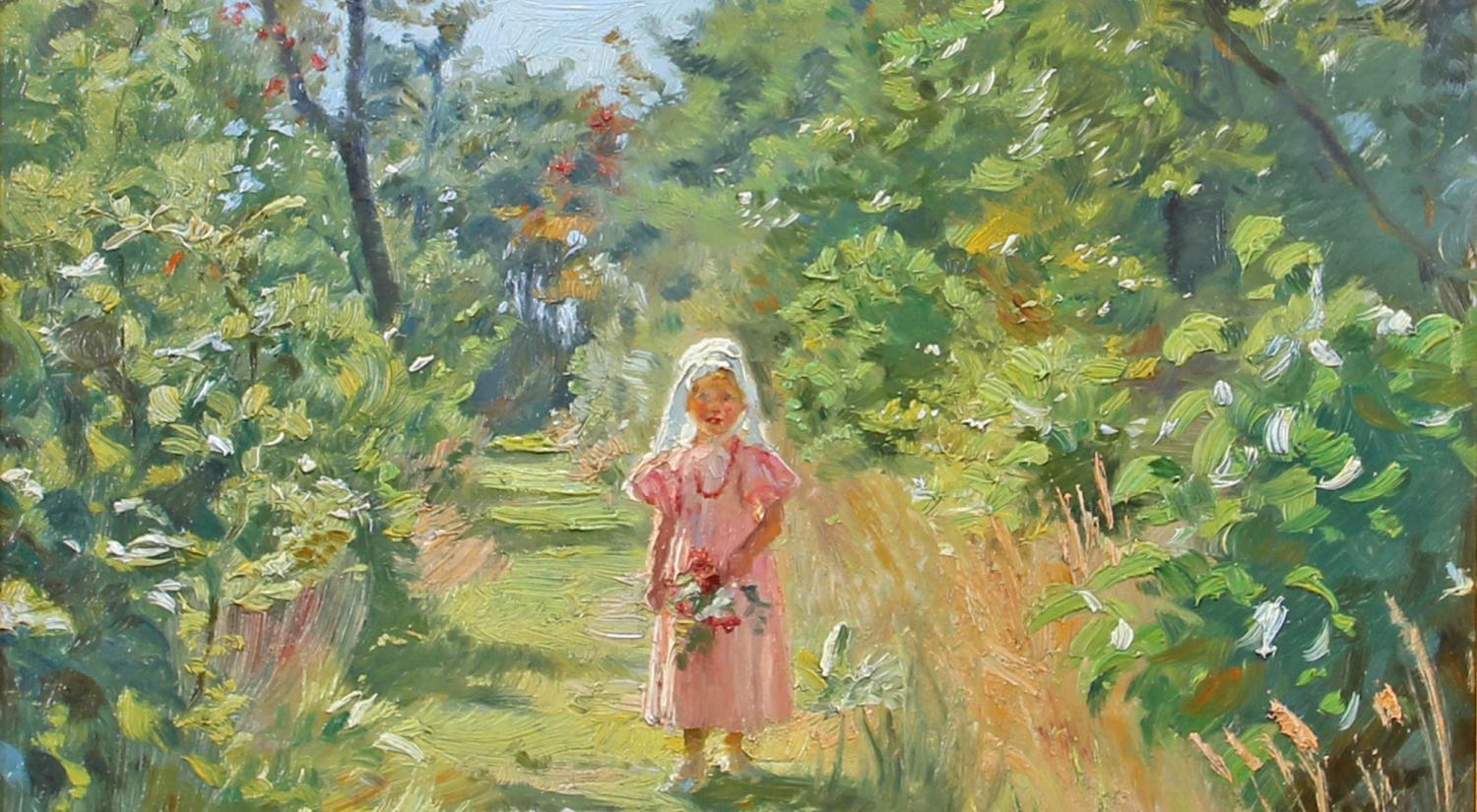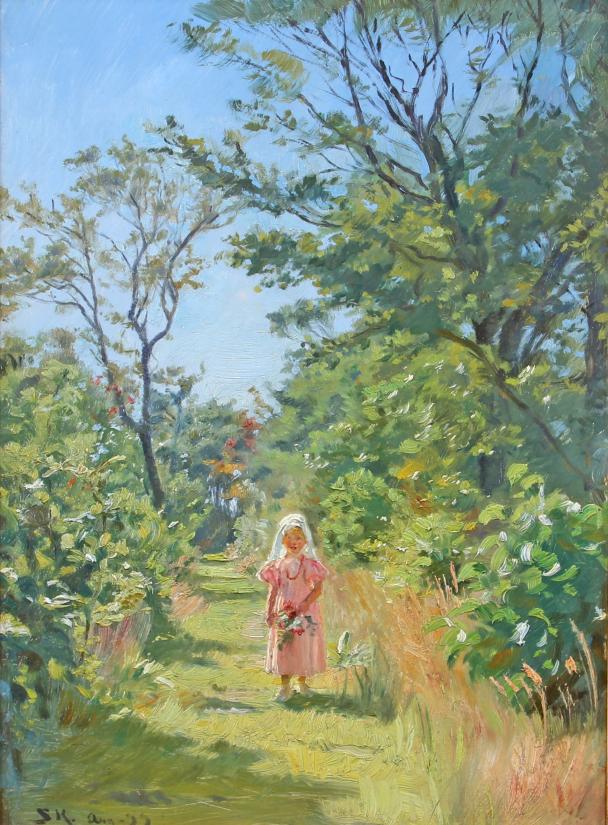The painting Vibeke Krøyer i Skagen Plantage (Vibeke Krøyer in Skagen Plantation) from 1899 shows Marie and P. S. Krøyer’s daughter, Vibeke, on a sunlit grassy path in the wood near the family’s home. There she stands, perfectly lovely, holding a bouquet of flowers in her hand, surrounded by greenery. Love and happiness, captured in a painting.
Quiet everyday poetry
Krøyer captures the effects of the light in thick brushstrokes that form a green framework of shrubs, trees and grass. The loose brushstrokes have an immediate, sensuous character, with the contrasts between light and shade bringing depth to the picture. Little Vibeke, in her rose-coloured dress, is the focal point in the verdant environment. And even though the scene is set outdoors, under the open sky, it has a personal, intimate feel. In this picture, Krøyer captures a moment of quiet everyday poetry from the family’s life in Skagen, which began in the summer of 1895, when the family moved into what is now known as ‘Krøyer’s house’ in the western part of Skagen near the plantation. This was the family home when they were not in Copenhagen.
Close and familial topics
Krøyer had portrayed close family members before. His wife, Marie, is depicted in several of his paintings, but not their daughter, Vibeke. This particular picture does seem to have held special significance for the artist, since it hung in the living room of the house in Skagen. Since Krøyer’s death in 1909, the painting has been in private ownership, most recently in the Klæbel family, who were among the original founders of what is now the Art Museums of Skagen. Now, the painting is included in the museum collection.
‘This painting offers an nsight into the family’s life in Skagen, it portrays the nature around the home and their daughter, Vibeke, and it is a painting of high artistic quality, which shows the side of the artist where he used the garden and the greenery as a setting for the portrait,’ says Lisette Vind Ebbesen, the director of the Art Museums of Skagen.
About P. S. Krøyer
Peder Severin Krøyer was born in Stavanger, Norway, in 1851 but was raised by his mother’s sister in Copenhagen. Here he enrolled at the Royal Danish Academy of Fine Arts at the age of 13 years. In 1877, he was awarded the Academy’s two-year travel grant, with supplementary funding from Heinrich Hirschsprung. This made it possible for Krøyer to spend four years abroad, including in Paris, where he took lessons from the painter Léon Bonnat. While there, he writes home to his former teacher Frederik Vermehren that his paintings seem flat, colourless and dull compared to the work of the French artists. Under Bonnat’s tutelage, he learns to work with colours and simplicity in a way that crucially comes to define his art. Once back in Denmark, Krøyer goes to Skagen in northern Jutland and joins the growing artists’ colony here. This becomes the beginning of a lifelong connection to this rural, coastal setting. He marries the young artist Marie Triepcke in 1889. His health begins to fail in the early years of the 20th century, while Marie initiates a romantic relationship with the Swedish composer Hugo Alvén. Krøyer dies in 1909, at the age of 58 years.




